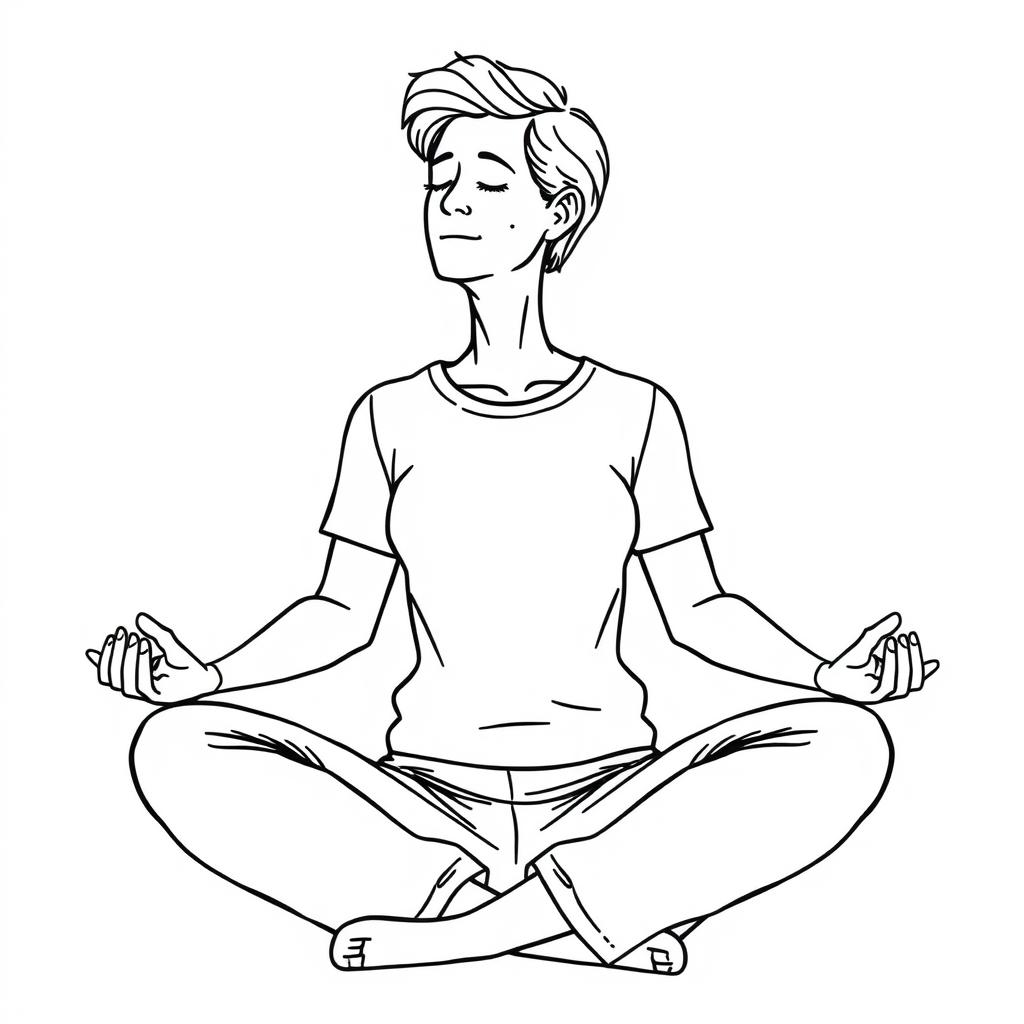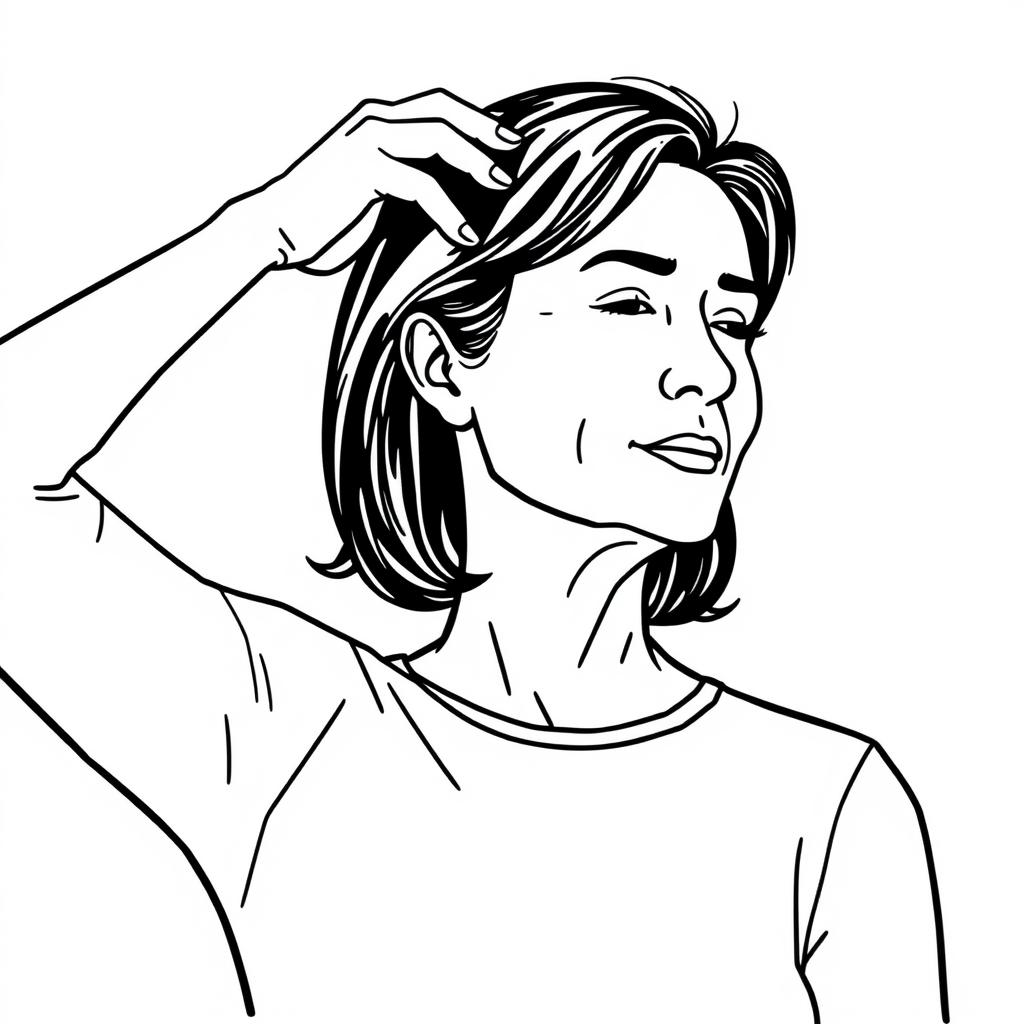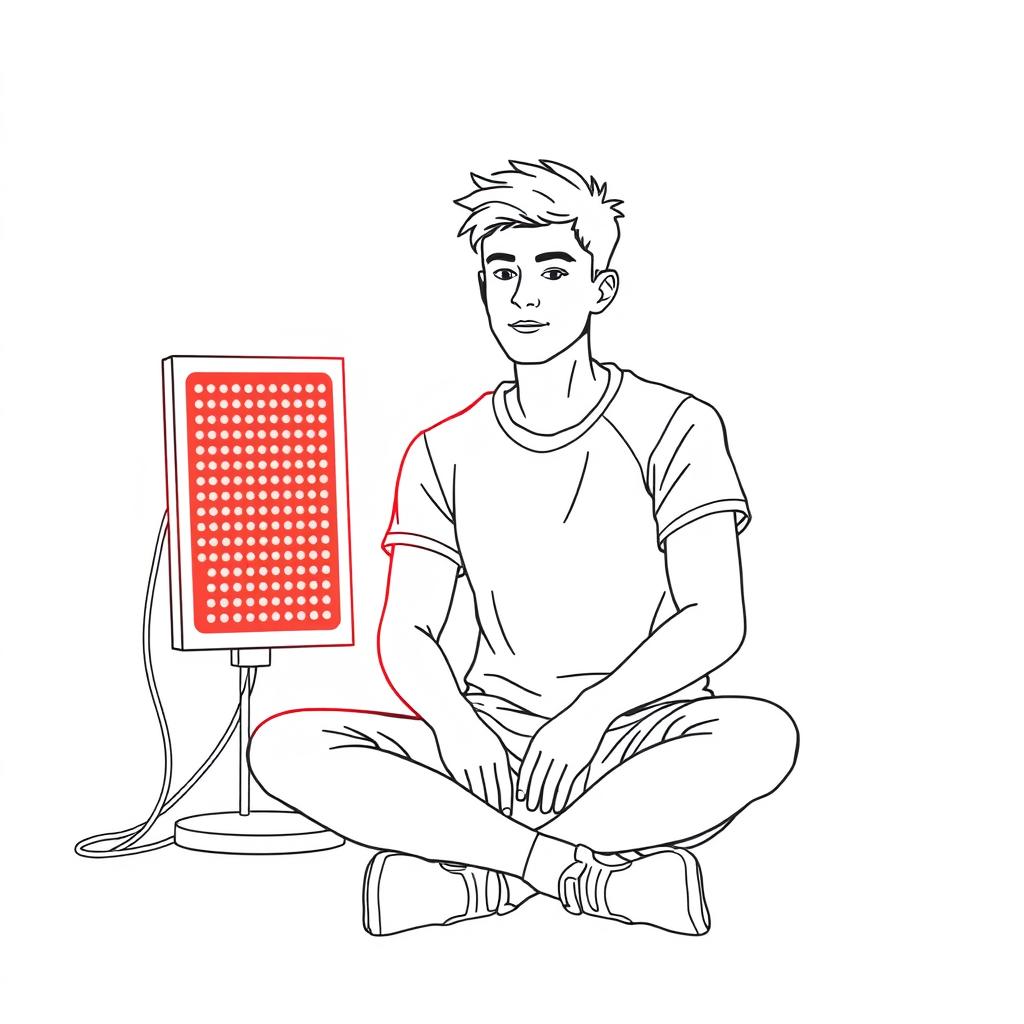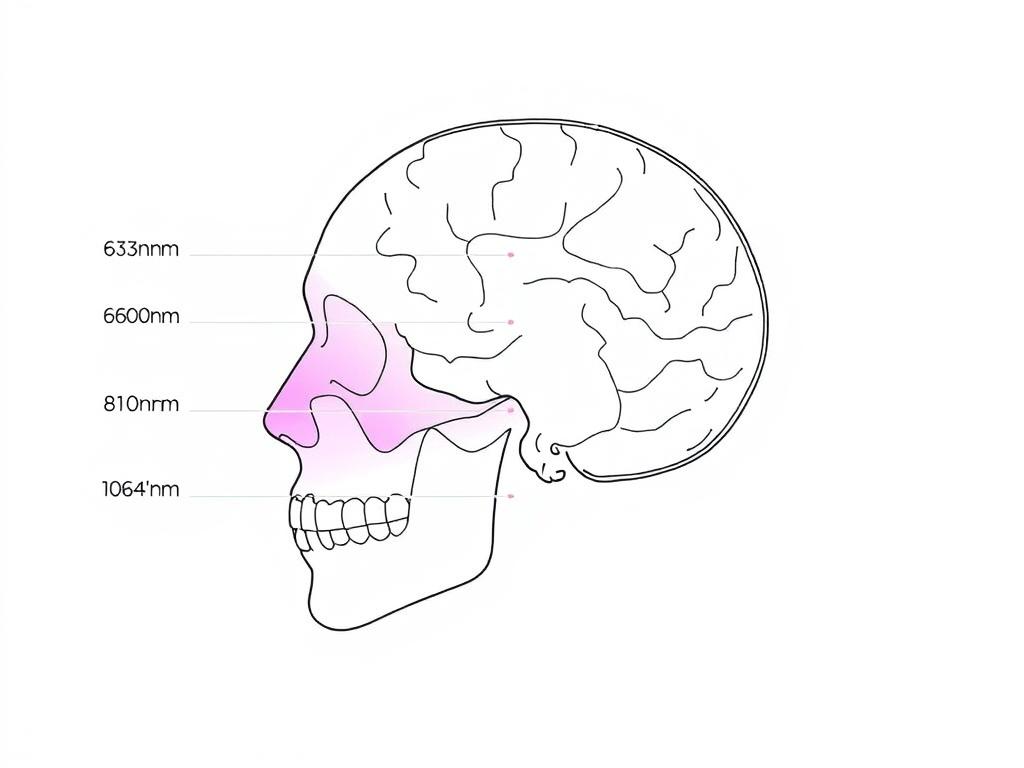Concussions affect approximately 1.6-3.8 million Americans annually according to the CDC, with many experiencing persistent symptoms that can last for months or even years. As researchers explore innovative approaches to brain injury recovery, red light therapy (RLT) has emerged as a promising non-invasive treatment option. This article examines the science behind using red light therapy for concussion recovery and how specific wavelengths of light may help heal the injured brain.
How Red Light Therapy Works for Brain Injury
Red light therapy, also known as photobiomodulation (PBM) or low-level laser therapy (LLLT), uses specific wavelengths of red and near-infrared light to stimulate cellular healing. When applied to the head, these wavelengths can penetrate the skull and reach brain tissue, where they interact with the mitochondria—the powerhouses of our cells.
The primary mechanism involves cytochrome c oxidase, an enzyme in the mitochondria that absorbs red and near-infrared light. This absorption increases adenosine triphosphate (ATP) production, providing more energy for cellular repair and reducing inflammation in damaged brain tissue. For concussion patients, this can potentially accelerate recovery and reduce persistent symptoms.
Key Benefits for Concussion Recovery
- Increased cerebral blood flow to injured areas
- Reduced neuroinflammation
- Enhanced mitochondrial function
- Improved cognitive performance
- Decreased oxidative stress
- Potential neurogenesis (formation of new neurons)
Common Concussion Symptoms Addressed
- Persistent headaches
- Brain fog and concentration issues
- Memory problems
- Sleep disturbances
- Mood changes and irritability
- Visual disturbances
Clinical Evidence for Red Light Therapy and Concussion
Several human clinical studies have demonstrated promising results for red light therapy in treating traumatic brain injuries and concussions. Here are three key studies:
Naeser et al. (2014)
This landmark study published in the Journal of Neurotrauma showed significant improvements in cognitive function among chronic mild traumatic brain injury patients after red/near-infrared LED treatments. Participants showed improved executive function, verbal learning, and memory after 18 treatment sessions.
Hipskind et al. (2018)
Researchers found that patients with persistent symptoms from traumatic brain injuries showed improved cerebral blood flow and cognitive function after 18 sessions of near-infrared light therapy. The improvements were both statistically and clinically significant.
Saltmarche et al. (2017)
This study demonstrated improved cognitive function, better sleep, and reduced PTSD symptoms in patients with chronic traumatic brain injury after transcranial and intranasal near-infrared light therapy, with benefits persisting at 12-week follow-up.
These studies collectively suggest that red light therapy can help improve cognitive function, reduce inflammation, and enhance quality of life for those suffering from concussion symptoms, even months or years after the initial injury.
Optimal Wavelengths for Neurological Healing
Not all red light is created equal when it comes to treating brain injuries. Research indicates that specific wavelengths penetrate the skull more effectively and provide optimal benefits for neurological healing:
Most Effective Wavelengths
- 808-810 nm: Penetrates deeply into brain tissue and has shown significant effects in multiple clinical studies
- 830 nm: Excellent penetration with strong mitochondrial stimulation
- 850 nm: Effective for deeper brain structures
- 1064 nm: Deepest penetration, reaching structures throughout the brain
- 633-660 nm: Less penetration but beneficial for surface brain areas and systemic effects
Dr. Michael Hamblin, a former Harvard researcher and leading expert in photobiomodulation, notes that the combination of red (633-660 nm) and near-infrared wavelengths (808-1064 nm) may provide synergistic benefits for brain healing, addressing both surface and deep brain structures simultaneously.
Comparing Red Light Therapy Devices for Concussion Recovery
When selecting a red light therapy device for concussion recovery, several key specifications determine effectiveness:
| Specification | Why It Matters | Optimal Range |
| Wavelengths | Different wavelengths penetrate to different depths and have varying effects on brain tissue | Combination of 633/660nm plus 810/830/850/1064nm |
| Irradiance (Power Density) | Must be powerful enough to penetrate the skull | 30-100 mW/cm² at treatment distance |
| Treatment Area | Larger area treats more brain tissue simultaneously | Sufficient to cover scalp areas above injured regions |
| EMF Levels | Lower is better for sensitive individuals | Minimal or zero at treatment distance |
| Flicker Rate | Can affect sensitive individuals | Under 1% for therapeutic use |
The Total Spectrum Ultra with its 480 LEDs delivers all seven therapeutic wavelengths including the crucial 810nm and 1064nm at 85 mW/cm² for full-scalp coverage in 10-minute sessions. Its dedicated “Neuro” preset is specifically calibrated for optimal brain treatment parameters based on clinical research. Compare leading panels side-by-side here to find the best option for your recovery needs.
PlatinumLED
Known for their robust irradiance validation and third-party testing, PlatinumLED offers reliable devices with published power metrics. Their BioMax series includes 810nm and 830nm wavelengths beneficial for brain recovery.
Joovv
Joovv’s user-friendly app integration allows for precise control of treatment sessions and tracking progress over time. Their modular design lets users expand coverage as needed for whole-head treatment.
Mito
Offering budget-friendly entry panels, Mito provides a more accessible starting point for those new to red light therapy. Their devices include basic near-infrared wavelengths suitable for beginning a concussion recovery protocol.
For those with concussion symptoms, the Total Spectrum Compact offers a good balance of coverage and portability with 216 LEDs delivering seven therapeutic wavelengths. Its 30-inch length provides sufficient coverage for targeted treatment of the head and neck region, which is crucial for addressing both direct brain stimulation and cervical issues that often accompany concussions.
Recommended Treatment Protocol for Concussion Recovery
Based on clinical studies and expert recommendations, here’s an evidence-based protocol for using red light therapy to support concussion recovery:
Session Parameters
- Frequency: 3-5 sessions per week initially, then 2-3 sessions per week for maintenance
- Duration: 10-20 minutes per session (based on device power)
- Distance: Follow manufacturer recommendations (typically 6-12 inches from device)
- Treatment areas: Direct application to head, focusing on injury location if known
- Course length: Minimum 8-12 weeks, with many patients continuing for 4-6 months
Best Practices
- Consistency is key—maintain a regular schedule
- Start with shorter sessions and gradually increase
- Document symptoms before and after treatment
- Combine with proper hydration and nutrition
- Continue other prescribed treatments from your healthcare provider
- Consider treating the neck and upper spine in addition to the head
“In our clinical studies, we found that patients with persistent post-concussion symptoms showed the most improvement when receiving consistent red light therapy treatments over a period of 2-3 months, with many continuing to show improvements even after 6 months of regular use.”
Safety Considerations for Red Light Therapy
Red light therapy is generally considered safe with minimal side effects, but there are important considerations when using it for concussion recovery:
Safety Advantages
- Non-invasive and non-thermal
- No known serious side effects in over 50 years of use
- No radiation exposure
- Quality devices have zero measurable EMF at ≥10 cm
- Can be used alongside other treatments
- No known drug interactions
Precautions
- Consult healthcare provider before starting treatment
- Not recommended for photosensitivity conditions
- May cause temporary headache or fatigue in some users initially
- Avoid direct eye exposure (though not harmful, it can be uncomfortable)
- Not a replacement for emergency medical care for acute concussions
- Results vary between individuals
Quality matters when selecting a device for neurological applications. Look for products with transparent specifications, clinical validation, and minimal EMF emissions. The Total Spectrum series from RLT Home features less than 1% flicker and zero measurable EMF at treatment distance, making them suitable for sensitive individuals recovering from brain injuries.
Complementary Approaches to Enhance Recovery
While red light therapy shows promise for concussion recovery, a comprehensive approach typically yields the best results:
Nutritional Support

Certain nutrients support brain healing and may enhance red light therapy effects:
- Omega-3 fatty acids (DHA/EPA)
- Antioxidants (vitamins C, E)
- Curcumin (turmeric)
- Magnesium
- Creatine
Cognitive Rest & Rehabilitation

Mental strategies that complement light therapy:
- Cognitive behavioral therapy
- Mindfulness meditation
- Neurofeedback
- Gradual return to cognitive activities
- Sleep optimization
Physical Approaches

Physical therapies that may enhance recovery:
- Vestibular rehabilitation
- Gentle neck exercises
- Graded exercise therapy
- Manual therapy for cervical issues
- Balance training
According to a 2019 study published in the Journal of Neurotrauma, patients who combined red light therapy with targeted nutritional support showed 24% greater improvement in cognitive function compared to those using light therapy alone.
Home Treatment vs. Clinical Treatment
Red light therapy for concussion recovery can be administered in clinical settings or at home. Each approach has distinct advantages:
| Consideration | Clinical Treatment | Home Treatment |
| Initial Cost | $50-150 per session | $500-5,000 one-time purchase |
| Long-term Cost | High ($3,000-9,000 for 3-month protocol) | Lower after initial investment |
| Convenience | Requires travel and appointments | Available anytime, no travel needed |
| Professional Oversight | Direct supervision by healthcare professionals | Self-administered (consult provider first) |
| Equipment Quality | Medical-grade, high power | Varies by manufacturer and model |
| Treatment Consistency | Limited by appointment availability | Can maintain consistent daily/weekly schedule |
For many patients with persistent concussion symptoms, investing in a quality home device like the Total Spectrum Mini for targeted head and neck treatment may be more cost-effective long-term than ongoing clinical visits. The Mini’s compact 12″ × 12″ size with 72 LEDs makes it ideal for focused treatment of specific head areas while being portable enough to use anywhere in your home.
“Many of my patients with post-concussion syndrome find that having a quality red light therapy device at home allows them to maintain the consistent treatment schedule that’s crucial for neurological recovery. The convenience factor alone significantly improves compliance with the recommended protocol.”
Real-World Recovery Stories
While individual results vary, these anonymized case studies illustrate how red light therapy has helped real concussion patients:
College Athlete

Background: 19-year-old soccer player with persistent symptoms 8 months after sports concussion
Protocol: 20-minute sessions, 5 times weekly for 12 weeks using 810nm and 850nm wavelengths
Results: 67% reduction in headache frequency, returned to full academic and athletic participation after 3 months
Car Accident Survivor

Background: 42-year-old with cognitive difficulties and sleep problems 2 years post-MVA
Protocol: 15-minute sessions, 3 times weekly for 16 weeks using multiple wavelengths
Results: Improved memory and concentration, 85% reduction in sleep disturbances, returned to work part-time
Military Veteran

Background: 35-year-old veteran with blast-related TBI, persistent headaches and PTSD
Protocol: 10-minute sessions, daily for 8 weeks using 810nm and 1064nm wavelengths
Results: 73% reduction in headache intensity, improved mood, reduced PTSD symptoms
These cases highlight the potential benefits of consistent red light therapy application for various types of concussion injuries, though results vary based on injury severity, time since injury, and individual factors.
How to Choose the Right Device for Concussion Recovery
When selecting a red light therapy device specifically for concussion recovery, consider these key factors:
Essential Features
- Wavelength combination: Look for devices that include both 810-850nm and 1064nm wavelengths for optimal brain penetration
- Power output: Higher irradiance (30+ mW/cm²) is necessary to penetrate the skull
- Treatment area: Sufficient size to cover the head or targeted areas
- EMF levels: Minimal EMF exposure is important for sensitive individuals
- Clinically validated: Backed by research or used in published studies
Practical Considerations
- Budget: Balance initial investment against long-term clinical treatment costs
- Ease of use: Simple operation for consistent daily use
- Warranty: Look for 2+ year coverage
- Trial period: Risk-free testing period (ideally 30+ days)
- Support: Access to knowledgeable customer service
Find Your Ideal Recovery Device
Ready to explore red light therapy options for your concussion recovery? Compare the top panels on the market to find the right combination of wavelengths, power, and features for your specific needs.
Frequently Asked Questions About Red Light Therapy for Concussion
How long does it take to see results from red light therapy for concussion?
Most clinical studies show initial improvements within 2-4 weeks of consistent treatment (3-5 sessions weekly). However, significant and lasting improvements typically require 8-12 weeks of regular use. Some patients with chronic symptoms may need 4-6 months of treatment for optimal results. Individual response varies based on injury severity, time since injury, and consistency of treatment.
Can red light therapy help with old concussions (1+ years)?
Yes, research suggests red light therapy can help with persistent symptoms from concussions that occurred years earlier. The Naeser et al. (2014) study showed significant improvements in patients with TBI symptoms lasting 10 months to 8 years. While recent injuries may respond more quickly, chronic cases have shown meaningful improvement with consistent treatment protocols.
Is red light therapy covered by insurance for concussion treatment?
Currently, most insurance plans do not cover red light therapy specifically for concussion treatment. However, some physical therapy or rehabilitation clinics that offer red light therapy may bill it as part of a comprehensive treatment program. Home devices are typically considered out-of-pocket expenses. Check with your specific insurance provider, as coverage policies continue to evolve as more clinical evidence emerges.
Can I use red light therapy if I’m taking medications for concussion symptoms?
Red light therapy generally does not interfere with medications used for concussion symptoms. However, always consult with your healthcare provider before starting any new treatment. Some medications may cause photosensitivity, which could potentially affect how you respond to light therapy. Your doctor can provide guidance specific to your medication regimen and medical history.
What’s the difference between LED and laser devices for brain treatment?
Both LED and laser devices can deliver therapeutic red and near-infrared light, but they differ in how the light is delivered. Lasers produce coherent, focused light beams, while LEDs produce non-coherent light over broader areas. Clinical research has shown benefits from both types. For home use, LED panels are generally preferred as they can safely cover larger treatment areas, are more affordable, and don’t pose the same risk of eye damage as lasers. Most clinical studies on concussion recovery have used LED-based devices.
Conclusion: Is Red Light Therapy Right for Your Concussion Recovery?
The growing body of clinical research suggests that red light therapy offers a promising, non-invasive approach for supporting concussion recovery. By stimulating cellular energy production, reducing inflammation, and enhancing cerebral blood flow, the right wavelengths of light may help address persistent symptoms and improve quality of life after brain injury.
While not a miracle cure, red light therapy represents a science-backed tool that can complement conventional concussion management strategies. The key to success appears to be consistent application over time, using devices with appropriate wavelengths and power output.
For those considering this approach, consulting with healthcare providers familiar with photobiomodulation is recommended. Whether pursuing clinical treatments or investing in a home device like the Total Spectrum series with its research-backed wavelength combination, understanding the science and setting realistic expectations will help guide your recovery journey.
Take the Next Step in Your Recovery
Ready to explore how red light therapy might help with your concussion symptoms? Compare the leading devices on the market to find the optimal solution for your needs.
— David, independent RLT researcher
Always consult with your healthcare provider before beginning any new treatment for concussion or traumatic brain injury. This article is for informational purposes only and does not constitute medical advice.

